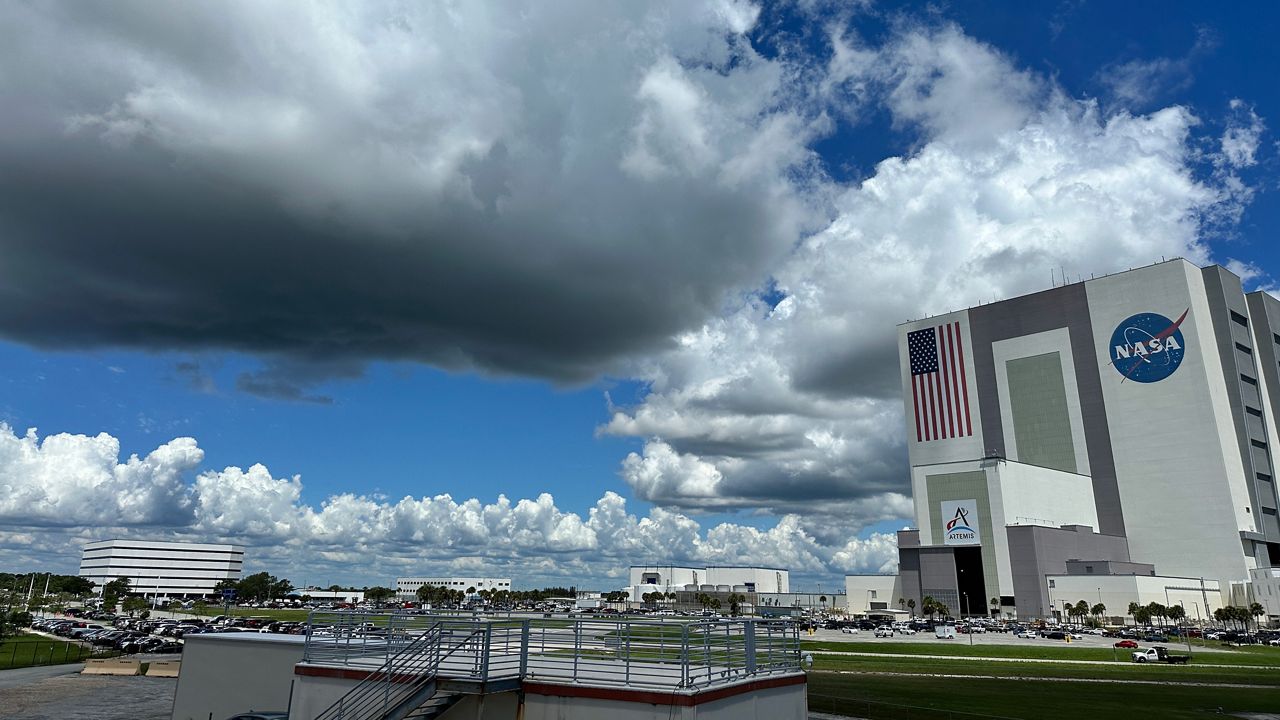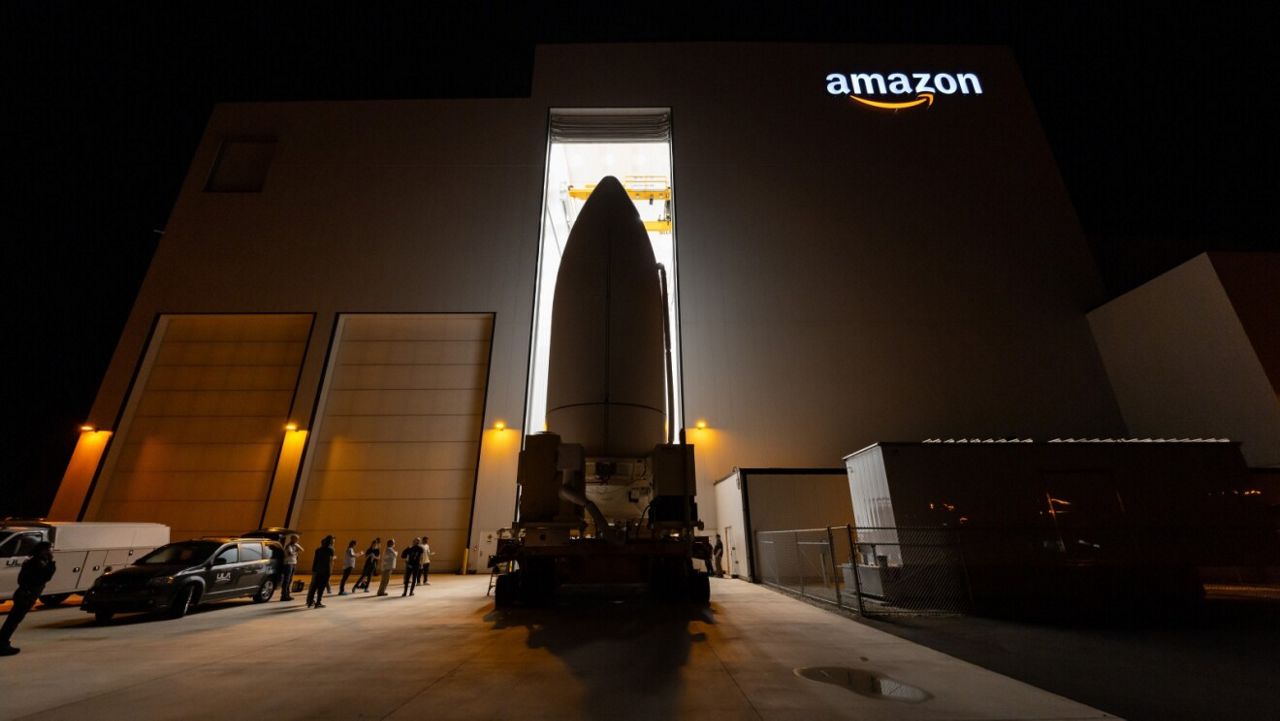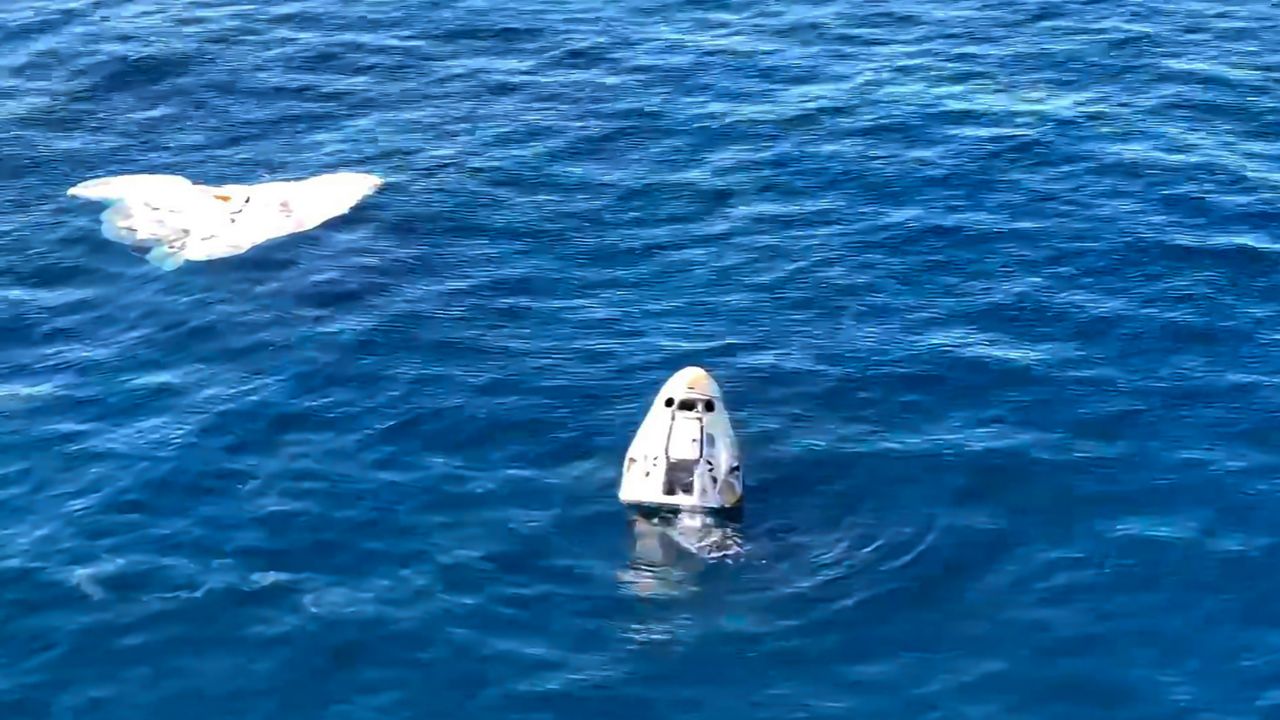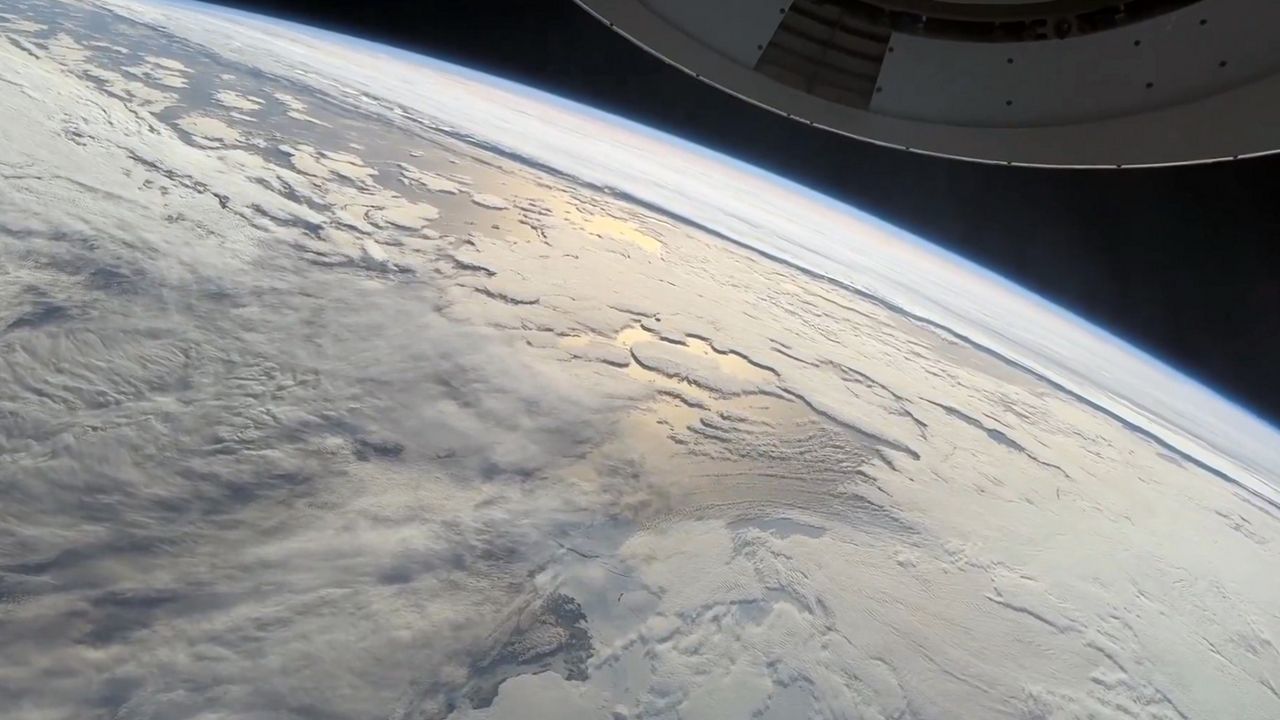KENNEDY SPACE CENTER — Even though poor weather conditions threatened the joint launch of NASA and National Oceanic & Atmospheric Administration’s (NOAA) final GOES weather satellite, it was still able to take off. And experts say this new satellite will better predict hurricanes and space weather.
What You Need To Know
- The GOES-U is part of a series of weather satellites
-
- Officials say GOES-U will provide valuable information for meteorologists and everyone else
- Get more space coverage here ▶
- 🔻Scroll down to watch the interview with NOAA director about GOES-U🔻
- 🔻Scroll down to watch the launch🔻
#GOESU was launched by @SpaceX's #FalconHeavy.
— 🚀Anthony Leone🌕 (@AnthonyLeone) June 25, 2024
The @NASA and @NOAA mission ushered a new weather satellite that will benefit not just meteorologists, but many others.
Learn more about the GOES-U in my article at @MyNews13: https://t.co/vz81ae3gUJ pic.twitter.com/DKY3jYu3zz
Countdown to launch
It was a rare and delightful sight for space fans as they saw over the Florida skies SpaceX’s Falcon Heavy rocket taking off from Launch Complex 39A at the Kennedy Space Center early Tuesday evening.
The two-hour launch window opened at 5:16 p.m. ET., but liftoff was pushed to 5:26 p.m. ET.
As a choir of space fans counted down, the Falcon Heavy took off to their cheers as the roar of its massive engines rocked the skies, vibrations that could be felt in one’s chest.
The two side first-stage boosters, brand new, landed at SpaceX’s Landing Zones 1 and 2, which was another treat for space lovers as twin sonic booms were heard.
The middle booster did not land and fell into the ocean, where it was retrieved.
Ironically, the weather did not look promising for the launch of the weather satellite. A few times before the launch, weather experts noted that lightning was detected at a few places and anvil clouds were seen closing into the area.
The 45th Weather Squadron called for a 30% chance of good liftoff conditions for the Geostationary Operational Environmental Satellite-U (GOES-U).
The main concerns against the launch were: Cumulus cloud, anvil cloud and surface electric fields rules.
SpaceX stated that if the launch were canceled, the next chance for takeoff would have been Wednesday, June 26, at the same time.

Weather could be a factor in the GOES-U launch Tuesday at the Kennedy Space Center. (Spectrum News/Joh Ficurilli)
SpaceX stated that if the launch is canceled, the next chance for takeoff would be Wednesday, June 26, at the same time.
The two side first-stage boosters, brand new, should be landing at SpaceX’s Landing Zones 1 and 2, so space lovers can keep an ear out for sonic booms.
The middle booster does not land and will fall into the ocean, where it will be retrieved.
NOAA director shares insights of GOES-U
NOAA Director Ken Graham spoke with Spectrum News about the advancements and benefits that the GOES-U will offer.
About the mission
This will be NOAA’s fourth and final satellite in the GOES-R series. The purpose of the GOES series is that it “provides advanced imagery and atmospheric measurements, real-time mapping of lightning activity, and monitoring of space weather,” NOAA stated.
The GOES satellite series is a shared NOAA and NASA program that provides continuous images and data on atmospheric conditions and solar activity, the space agency stated.
Once the GOES-U gets to a geostationary orbit, it becomes GOES-19. And then it will replace the GOES-16 satellite, which it will be renamed GOES East, shared NOAA’s chief scientist of the GOES-R program, Dr. Dan Lindsey, during a teleconference on Monday morning.
He added that as soon as the GOES-U is launched, it will be at the orbit of 89.5 west longitude, just over the continental United States and after a series of check outs over a number of months, it will move into position at 75 west longitude and replace the GOES-16 satellite. This is when it will be given its final name of GOES East.
In this new position, the GOES-U will keep an electronic eye open for severe storms, fires and hurricanes over the vast parts of the Atlantic Ocean and South, Central and North Americas.
The GOES-U satellite is packed with equipment to monitor the weather; earthly or otherwise. Some of the equipment includes:
Advanced Baseline Imager: The main instrument of the GOES satellites is used for imaging the weather, oceans and the environment. NOAA stated the data collected from the imager will help meteorologists when it comes to severe weather and hurricane coverage.
Geostationary Lightning Mapper: This is the first of its kind to be sent to a geostationary orbit. This will help meteorologists to focus on early thunderstorm development before it can create damaging winds or even tornadoes.
Instruments that monitor sun and space weather: The GOES-U satellite will have additional instruments that will monitor and record such things as solar flares or energetic particles and magnetic field variations that can wreak havoc on power utilities, communications, navigation systems and satellites.
What this means for the people of Earth
Officials and meteorologists shared the benefits of the GOES weather satellites.
Lindsey said the GOES-U will provide data that will help meteorologists predict and track hurricanes and allow them to give tornado warnings.
The GOES-U will help warn against solar flares that can disturb satellites and it will provide vital information to pilots, said Elsayed Talaat, director at NOAA’s Office of Space Weather Observations.
Spectrum News meteorologist Maureen McCann talked about the benefits the GOES-U will provide.
“With the increased importance of forecasting space weather, GOES-U will provide meteorologists with better tools to assess the threats that we face from solar flares. The geostationary lighting mapper data will be especially useful for us here in the lightning capital of the country, giving us more insight to our daily sea breeze thunderstorms in addition to any tropical activity,” said the Florida meteorologist.
Stacy Lynn, another Spectrum News meteorologist, talked about how this last satellite in the GOES-R series will help keep communities protected.
“When GOES-19 satellite launches, it will complete the GOES-R series and provide even more information for meteorologists to use on the ground. Here in the Midwest, having the best technology for severe weather forecasting is important. The GOES-R series allows us to observe the evolution of convection helping to provide real-time storm tracking to keep our communities safe,” she said.









